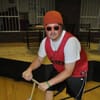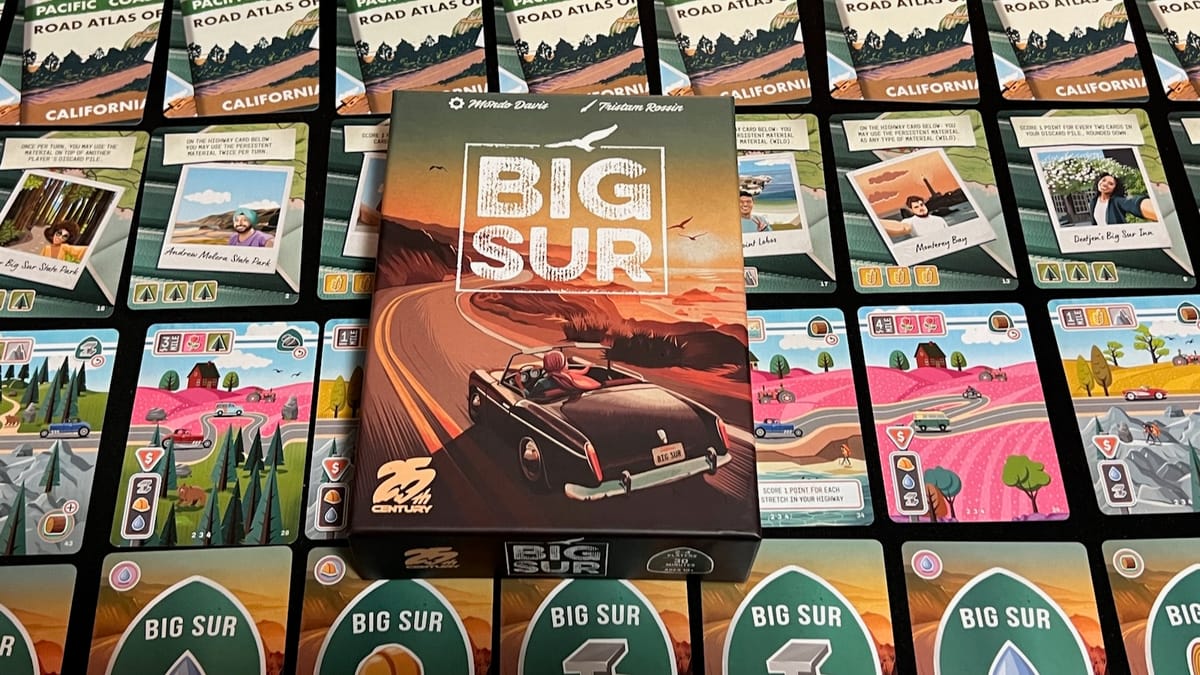
I’ve always wanted to drive down the Pacific Coast Highway in California to check out the scenic beauty that comes with the mountains and oceans. If I close my eyes, I can almost see me in the driver's seat of a classic convertible with my wife in the passenger seat with the wind whipping through our hair. A little cliche and cheesy, I know, but it doesn’t mean it would be great! Until then, Big Sur is here to give me a little taste of what it might be like to drive down the road and take in those stunning views.
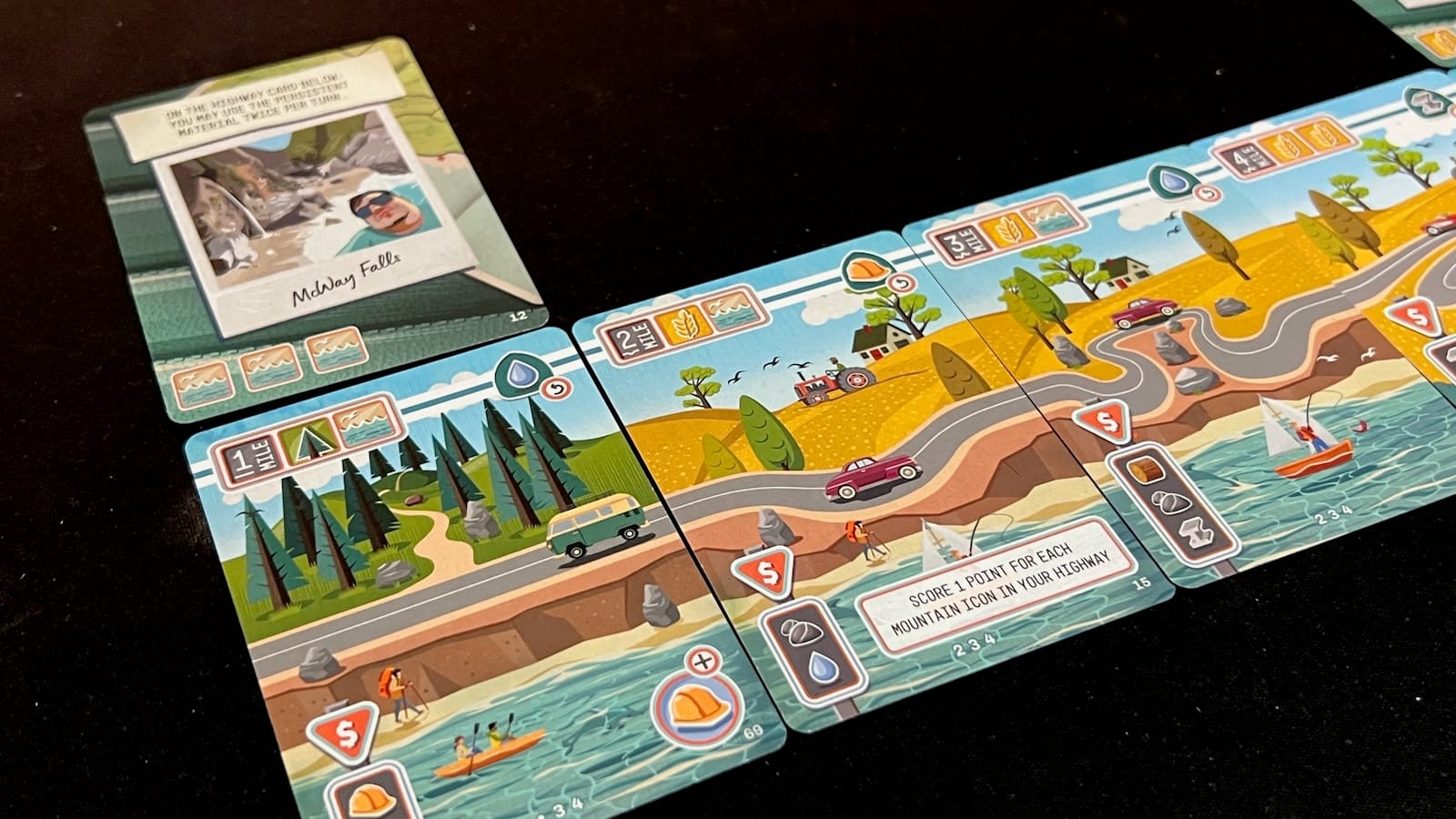
Big Sur is a brand new card game from designer Mondo Davis and publisher 25th Century Games. In Big Sur, 2-4 players will be creating their own personal stretches of Highway 1 through the Big Sur section of the roadway. Players will collect cards and use them either as extensions of their highway or as resources to build other cards. Players will try to build stretches of similar scenery, collect landmarks, and manage resources to build the most idyllic roadway to score the most points and win.
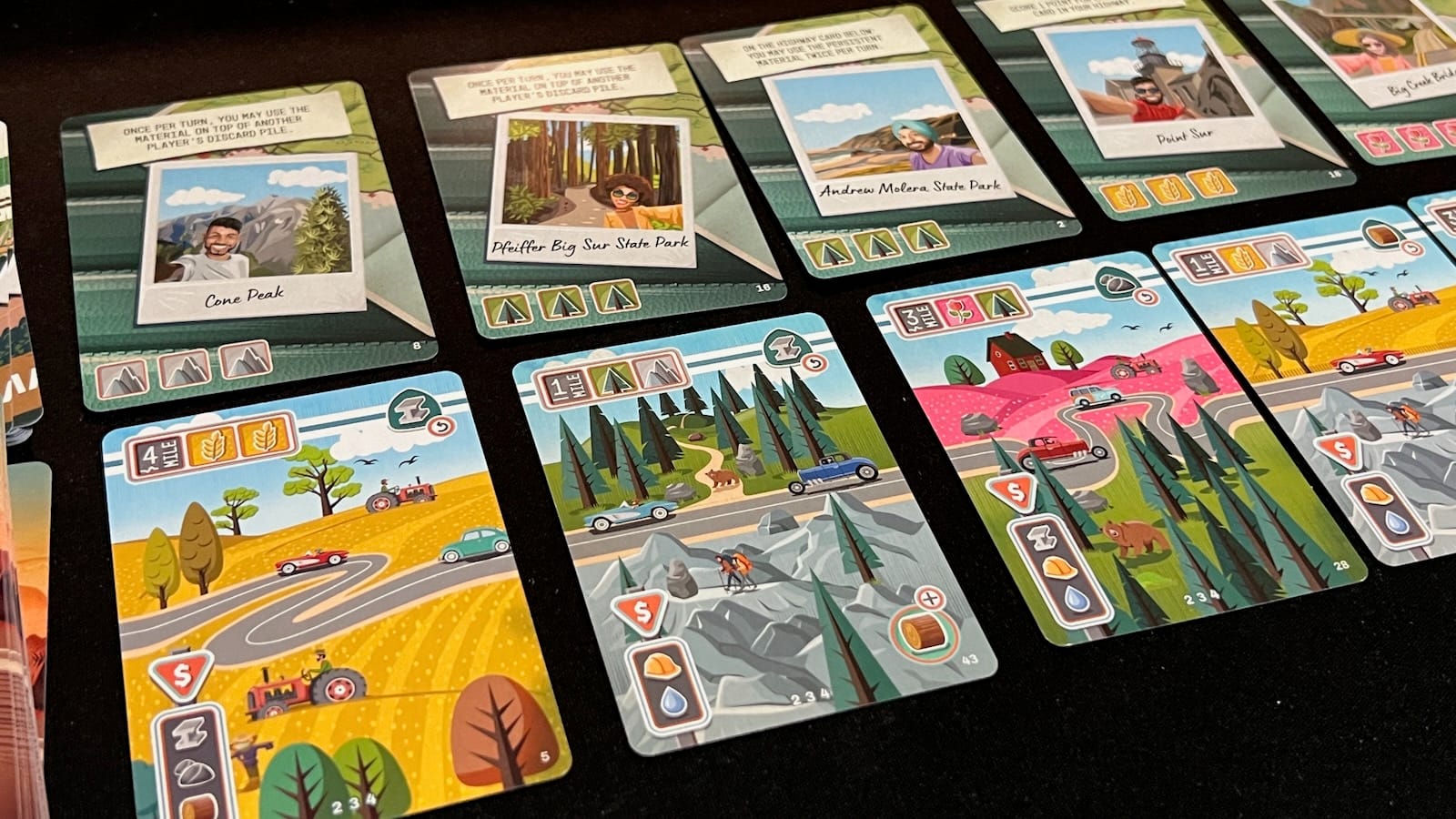
There are two different types of cards in Big Sur: highway and landmark cards. Highway cards are the workhorses of the game. Each card features a mile tag, two scenery icons, a cost in materials to build, a material symbol on the backside, and either a persistent material or a bonus condition (or not if the road is long). The landmark cards feature a bonus condition the player will benefit from if they acquire the card, and represent different popular tourist locations along the road.
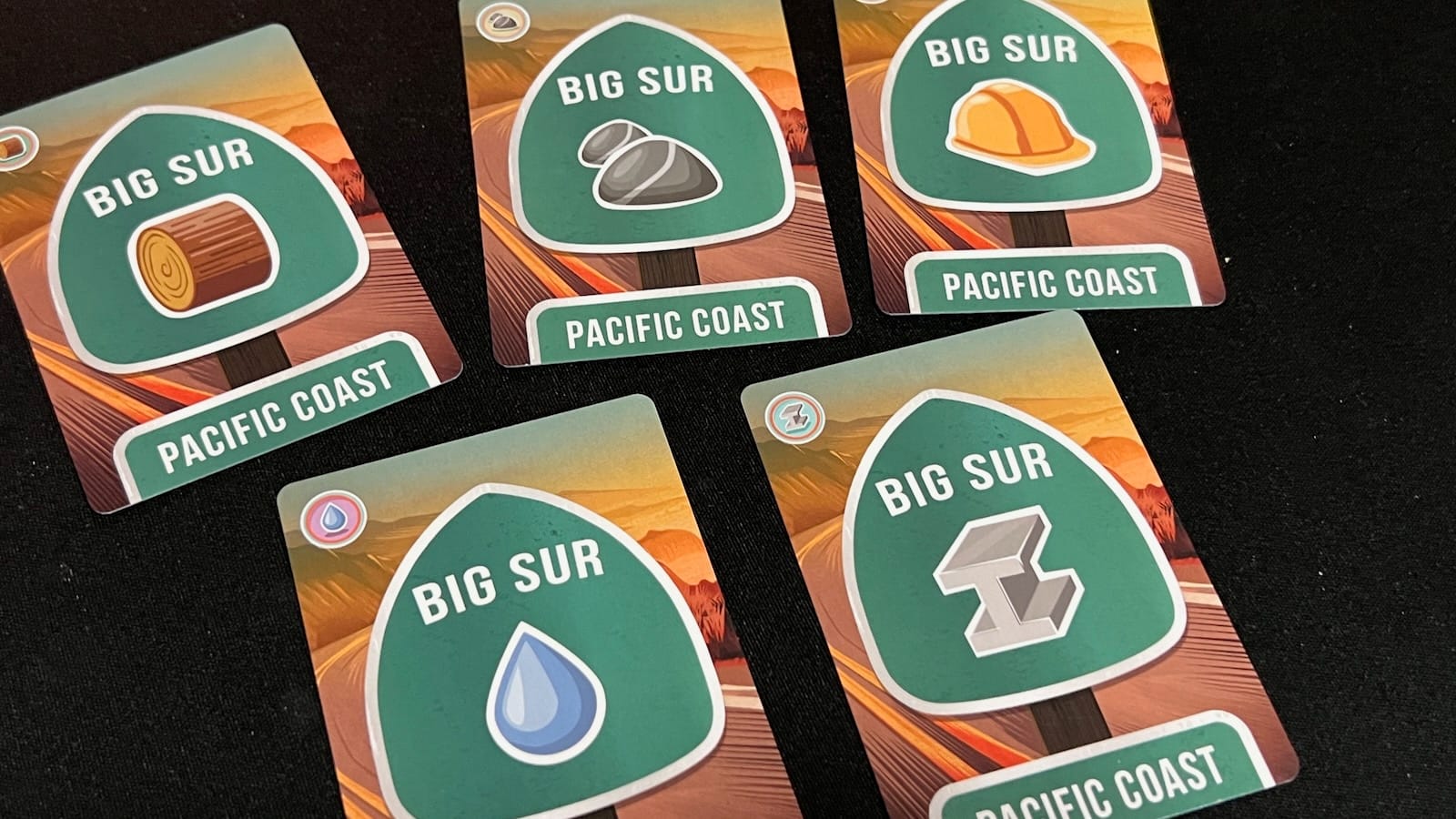
On a turn, a player will draw two highway cards from a display of five face-up cards or from the top of the draw deck. Then players have the opportunity to build as many sections of highway as they can or want. To build a section of a highway, players must pay the cost of the card using the resources printed on the back of other cards from their hand, persistent resources printed on already built cards, or by using (once per round) the face-up resource on the top of their personal discard pile. Built highway cards are added to one of the ends of their already existing personal highway row. When building highway cards, players are trying to create stretches of 3 or more cards of matching types of scenery.
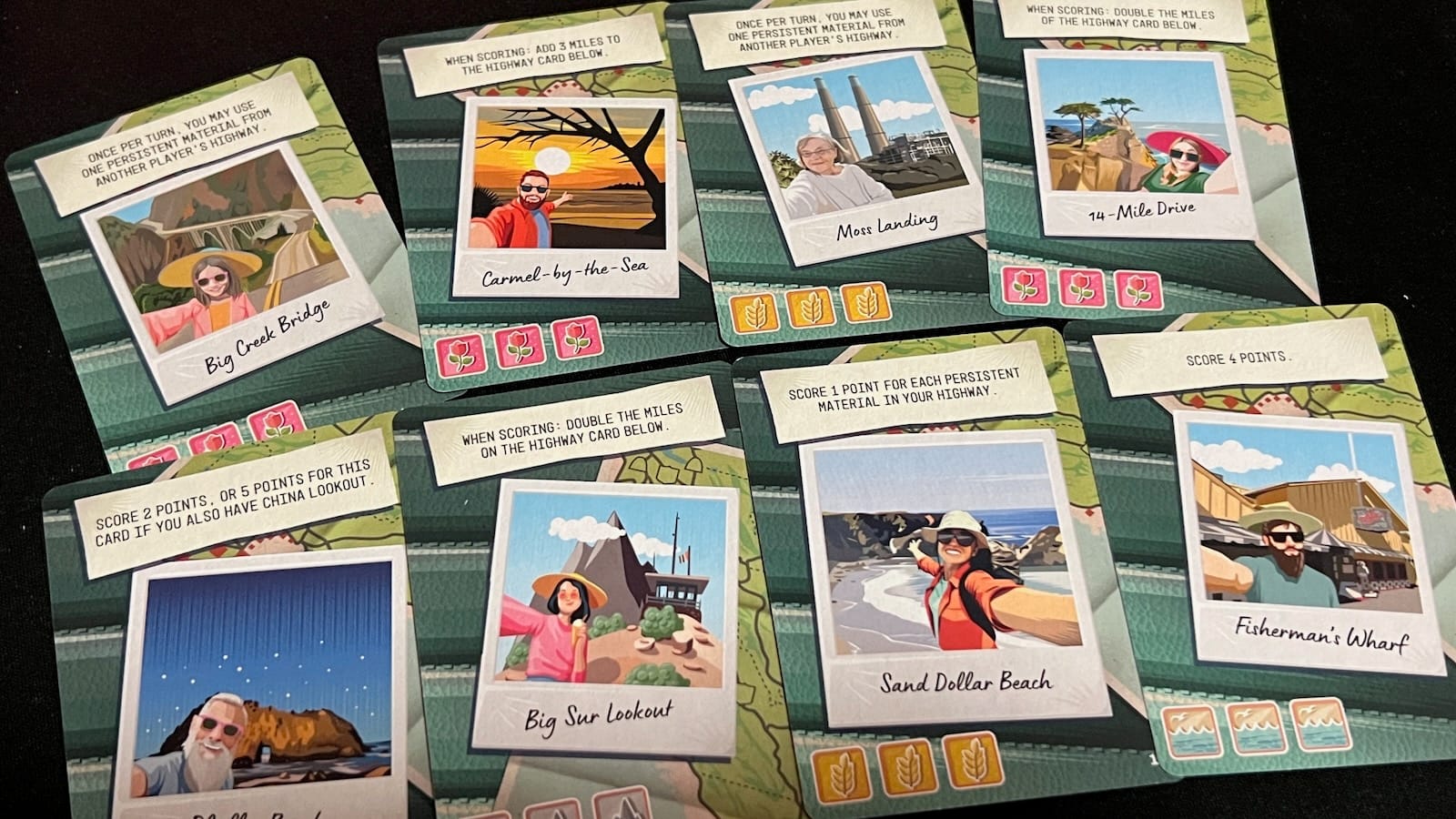
Once players have built a third card of matching scenery in a row, once per round, they can claim a landmark card matching the grouping. The landmark is then placed above one of these cards to gain its benefit. The benefits may add end game scoring conditions, double the use of a persistent material on the card below, or even give straight up victory points.
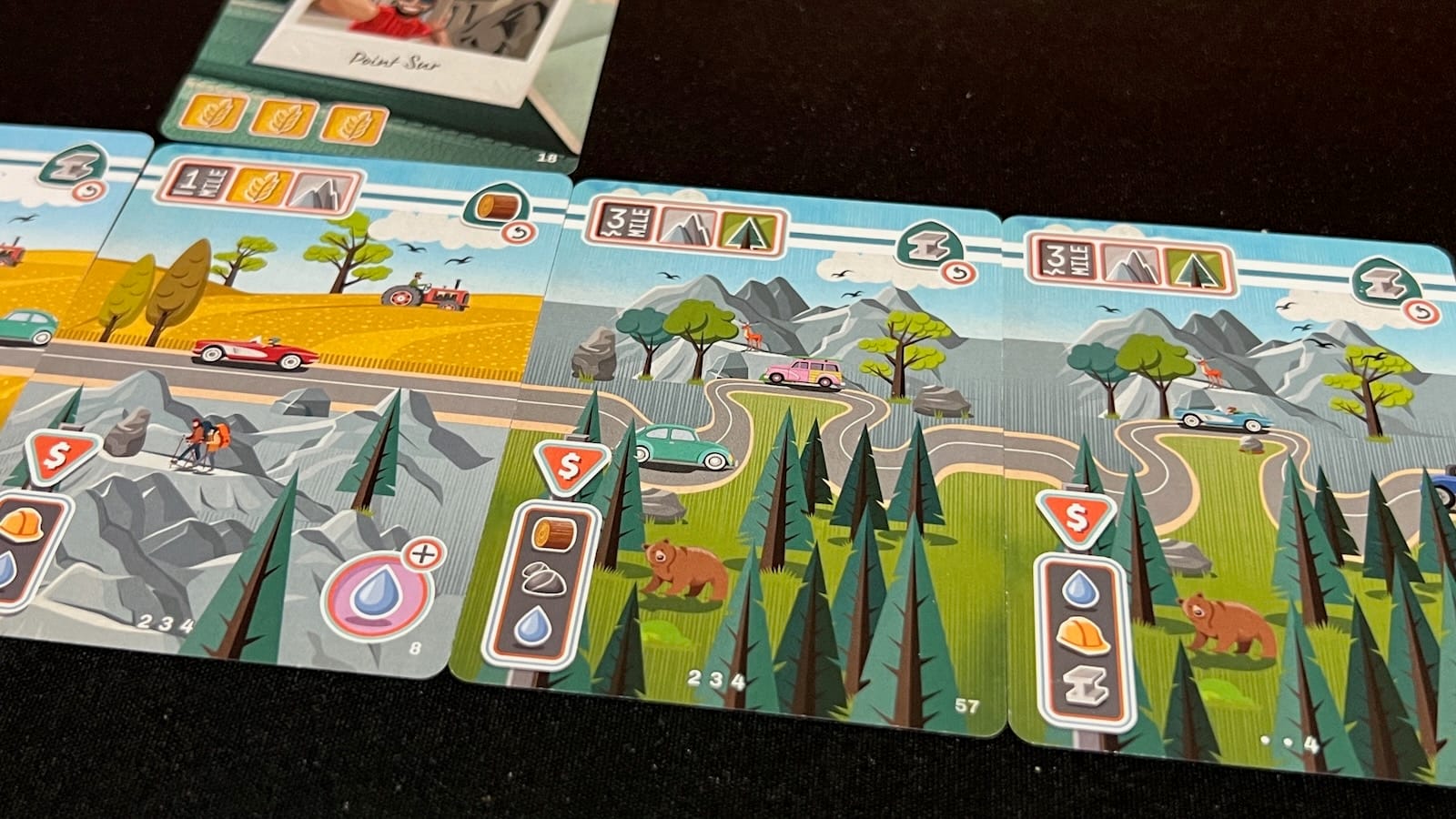
At the end of a player's turn, any cards missing from the display are replaced and play rotates around the group. The game ends when the draw deck runs out of cards. Players will then score in three different conditions.
- Stretches: Each stretch of three or more scenery cards will add the mile markers featured on those cards together, factoring in any bonuses from landmarks above.
- 2-Mile Bonuses: Each 2-Mile card features a specific scoring condition that is added together
- Landmarks: Players will score 3/5/8 points based on the number of landmarks they have attained
All scores are added up, with any ties broken by the player with the least amount of highway cards built being the winner.
Overall Thoughts
Big Sur is exactly what I look for in a small box game. Great strategy, easy to learn, and very replayable. My wife and I love to throw games like this in our bag when we head to a coffee shop or when we’re going away for a weekend.
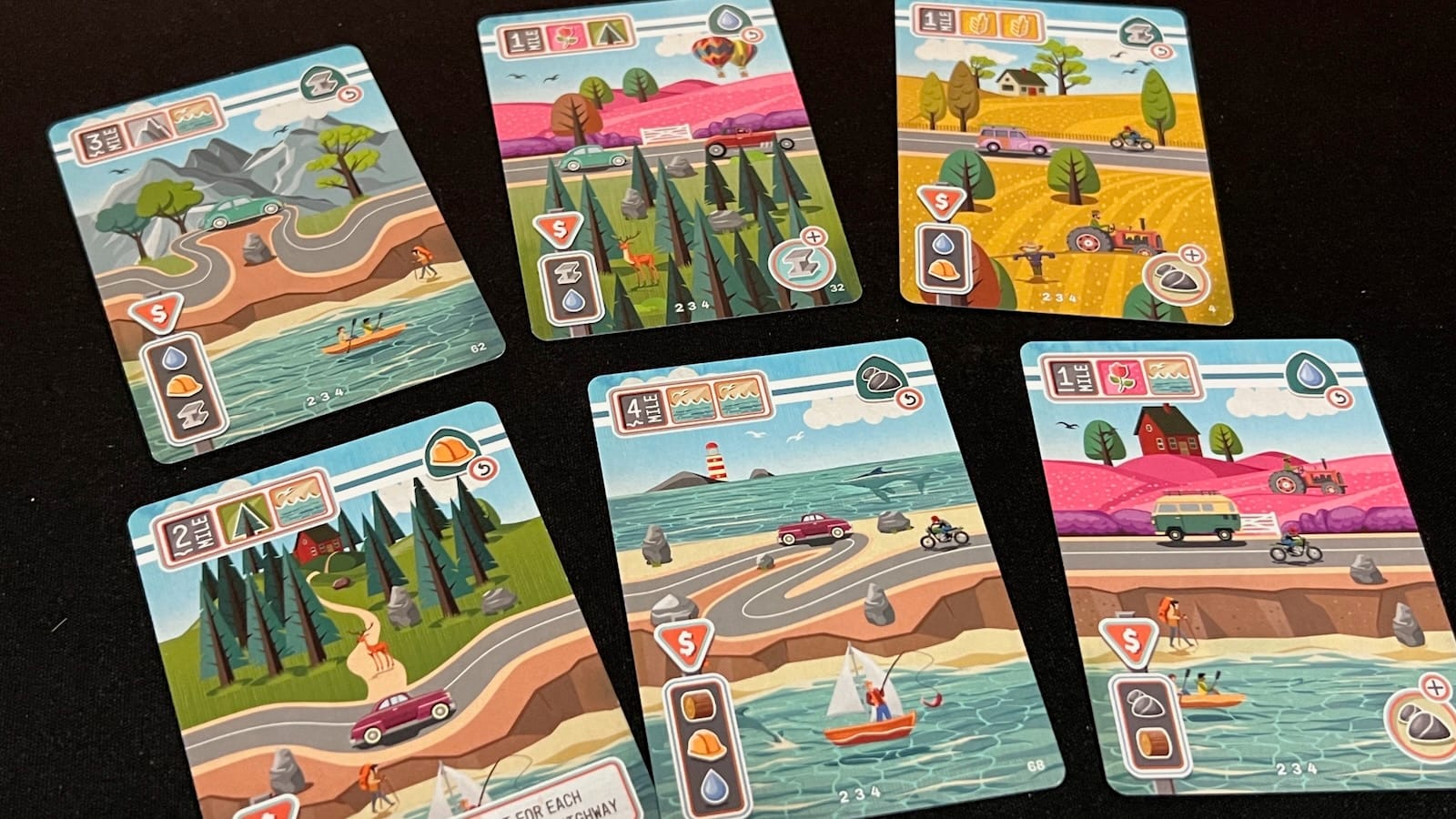
First of all, the artwork on the cards is playful and fun and beautiful. The characters featured throughout each of the scenes are reused, but each tells a different playful story. A personal favorite is the bear that looks curiously at the players hovering above the cards. Each of the landmarks seems like a cartoon image of a real person who is visiting the location. Maybe Mondo or artist Tristan Rossin had their friend take selfies to include in the game.
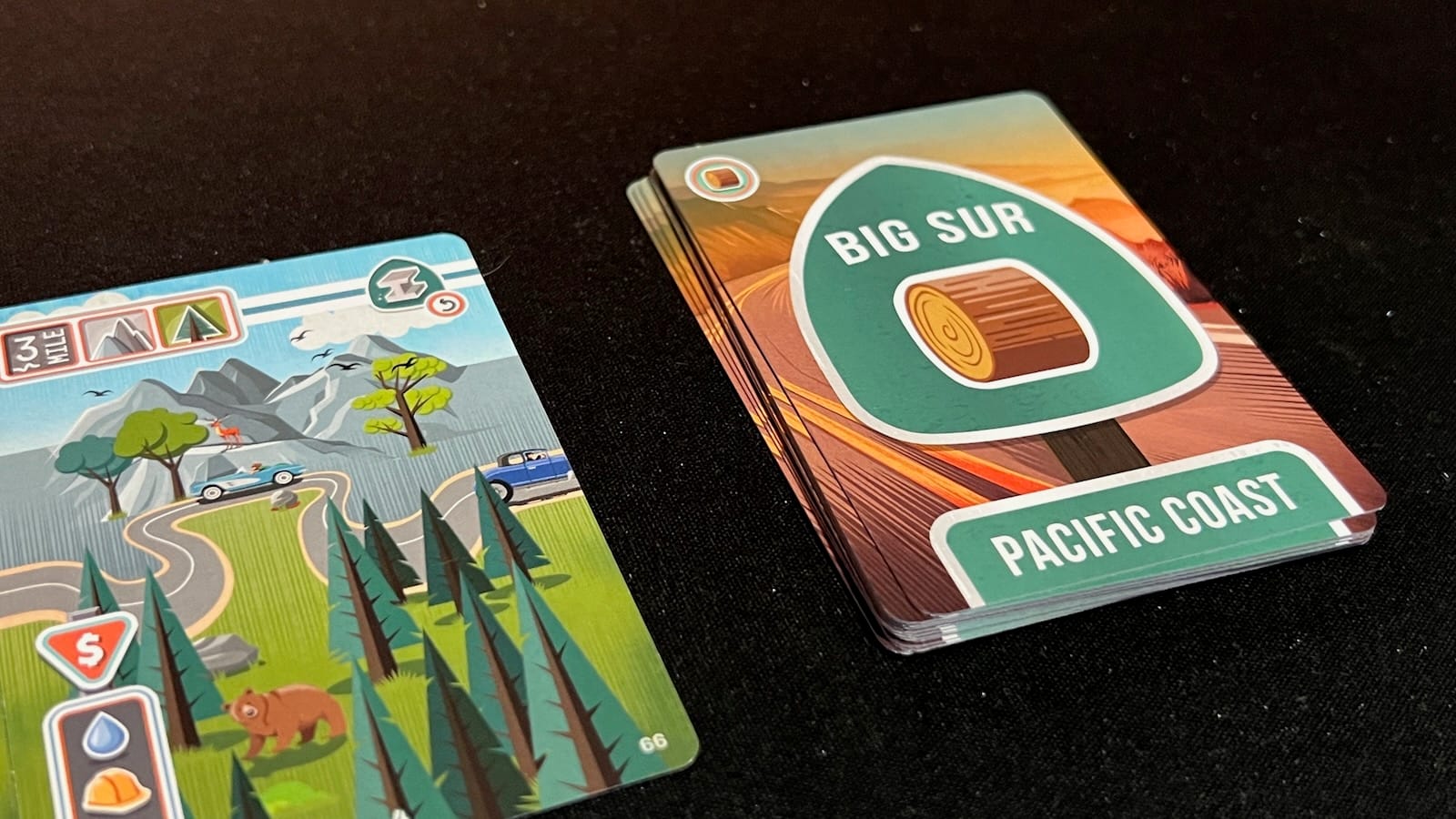
The gameplay is also a ton of fun! The multi-use cards cause a player to decide whether to hold on to it and build or sacrifice them for the resource they give. The clever symbol on the front of the card reminds you what the resource is on the back, and being able to play the resource from the discard pile is also a nice touch. The big point getter for me was stringing together various scenic stretches and having them flow one into another. A card may show a forest and mountain, but the card to the right might be forest/flowers, and the card to the left mountains/water, letting you flow from one stretch to another. There is always something that you can do in the game, and you never feel stuck. Adapting to the cards available is half the fun of Big Sur.
My only detractors for the game are that it can take up some space on the table and a player count. The longer your highway, the more table space you will need, not to mention the tableau in the middle of the table. The more players you add, the more game time you add as well. There isn’t much player interaction other than another player taking cards you may want from the tableau. The game does shift the number of cards in the deck depending on player count so every player will have the same number of turns.
Big Sur
Great
Big Sur offers a lot of fun in a small box. A perfect game for a morning at the coffee shop or a night where you want some strategy but don’t want to go too deep. The overall aesthetic of the artwork and the fun gameplay make this one that will stay in my collection!
Pros
- Great artwork and graphics throughout the game
- Easy to learn and quick gameplay
- Shifting strategies through multi-use cards
Cons
- Multi-player solo vibes the more players added
- The bigger the highway, the more space it takes up on the table
This review is based on a retail copy provided by the publisher.
